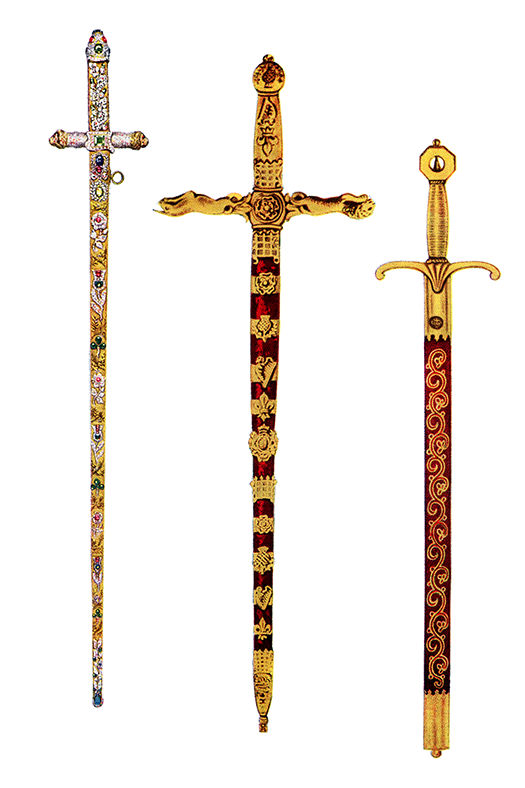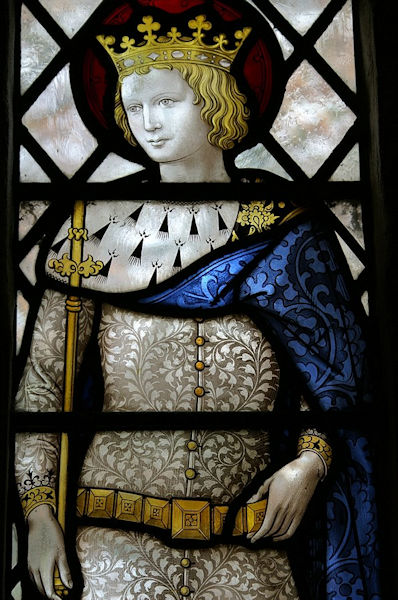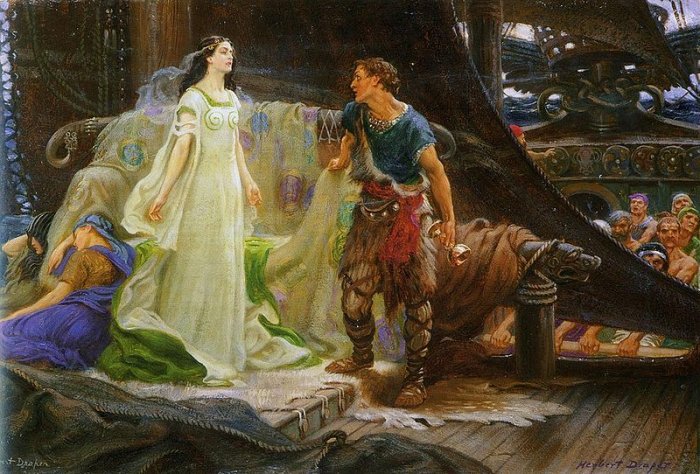Curtana – Sword Of Mercy Once Belonged To The Anglo-Saxon King Edward The Confessor And Perhaps Even The Arthurian Hero Tristan
Ellen Lloyd – AncientPages.com - Curtana, the Sword of Mercy, is an 11th-century sword that is a truly historical object and one Crown Jewels of the United Kingdom. It is one of only five swords used during the coronation of British kings and queens.
The other four British coronation swords are the Jeweled Sword of State, the Sword of State, the Sword of Temporal Justice, and the Sword of Spiritual Justice. The British Crown Jewel's swords are some of the most valuable swords in the world.
From left to right: The jeweled Sword of Offering, the Sword of State, and the Sword of Mercy (Curtana).
G. Younghusband; C. Davenport (1919). The Crown Jewels of England. London: Cassell & Co. p. 54. (published in the US by Funk & Wagnalls, NY). Cyril Davenport (1848 – 1941)
This famous weapon once belonged to Edward the Confessor (1003-1066), one of the last Anglo-Saxon kings of England before the Norman Conquest of 1066. He was known as 'the Confessor' because of his deep piety.
Edward the Confessor ruled from 1042 to 1066, and his reign was characterized by the crumbling disorganization of royal power in England. Shortly after Edward the Confessor's death, the Normans began to expand into England, led by William the Conqueror, a ruthless and powerful ruler who changed Britain forever.
Church of England parish church of St Nicholas, Ickford, Buckinghamshire: stained glass window depicting Saint Edward the Confessor. Ickford, Buckinghamshire. Credit: Vitrearum - CC BY-SA 2.0
The name Curtana comes from the Latin Curtus, meaning short. Interestingly the sword is also linked to some ancient legends.
According to one legend, the Curtana was the sword of Ogier the Dane, an 8th-century warrior. The sword bore the inscription, "My name is Cortana, of the same steel and temper as Joyeuse and Durendal." It is said that Ogier drew the Sword of Mercy against Emperor Charlemagne's son in revenge for the murder of his son but stopped with a voice from Heaven called upon him to show mercy.
Tristan and Iseult as depicted by Herbert James Draper (1864–1920). Public Domain
Another legend links the Sword to Mercy to Tristan, the hero of the Arthurian Tristan and Iseult story. He was a Cornish knight of the Round Table.
The 13th-century Prose Tristan states that Ogier had inherited Tristan's sword, shortening it and naming it Cortaine.
These ancient legends may be true but have not been confirmed. What is undoubtedly very possible is that the Sword of Mercy once belonged to Edward the Confessor.
It has a steel blade inlaid with copper and a wire-bound grip. The scabbard is covered with velvet and embroidered with gold thread. The blade started as a normal pointed sword that had been cut off about from its original point. Why the sword is broken is an ancient mystery. Perhaps Edward, the Confessor, broke the blade himself or had it forged that way precisely for the current symbolic resonance. It's also been said that an angel broke off the blade to show that a sovereign must show mercy.
Today, the Sword of Mercy is displayed with the other Crown Jewels in the Jewel House at the Tower of London.
Updated on March 9, 2024
Written by - Ellen Lloyd – AncientPages.com
Copyright © AncientPages.com All rights reserved. This material may not be published, broadcast, rewritten or redistributed in whole or part without the express written permission of AncientPages.com
More From Ancient Pages
-
 Vikings’ Self-Image Was Influenced By Ancient Rome – Intriguing Grave And Artifacts Reveal
Archaeology | Oct 18, 2022
Vikings’ Self-Image Was Influenced By Ancient Rome – Intriguing Grave And Artifacts Reveal
Archaeology | Oct 18, 2022 -
 Ancestors Of The Irish And Scots Came From Biblical Lands And Ancient Egypt – Myths, History And DNA
Civilizations | Jul 14, 2020
Ancestors Of The Irish And Scots Came From Biblical Lands And Ancient Egypt – Myths, History And DNA
Civilizations | Jul 14, 2020 -
 Why Did Archaeologists Destroy Medieval King’s Wharf After Excavations?
Archaeology | May 17, 2023
Why Did Archaeologists Destroy Medieval King’s Wharf After Excavations?
Archaeology | May 17, 2023 -
 Natural Dyes To Color Clothing Were Used Thousands Of Years Ago – New Study
Archaeology | Apr 22, 2019
Natural Dyes To Color Clothing Were Used Thousands Of Years Ago – New Study
Archaeology | Apr 22, 2019 -
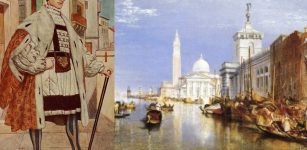 Ancient Venetian Merchants Were Always Prepared For The Worst
Featured Stories | Jul 12, 2024
Ancient Venetian Merchants Were Always Prepared For The Worst
Featured Stories | Jul 12, 2024 -
 Riddle Of The Hanging Gardens Of Babylon – Ancient Place Still Shrouded In Mystery – Part 1
Featured Stories | Jun 7, 2019
Riddle Of The Hanging Gardens Of Babylon – Ancient Place Still Shrouded In Mystery – Part 1
Featured Stories | Jun 7, 2019 -
 The Mixtec – Mysterious Very Advanced Culture Of The Foremost Goldsmiths Of Mesoamerica
Civilizations | Dec 2, 2017
The Mixtec – Mysterious Very Advanced Culture Of The Foremost Goldsmiths Of Mesoamerica
Civilizations | Dec 2, 2017 -
 Mayan Maize God And Ancient City Of El Mirador
Featured Stories | Apr 25, 2019
Mayan Maize God And Ancient City Of El Mirador
Featured Stories | Apr 25, 2019 -
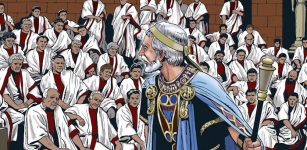 Roman Consuls Seized Power Through Intimidation, Bribery And Show Business
Ancient History Facts | Feb 24, 2021
Roman Consuls Seized Power Through Intimidation, Bribery And Show Business
Ancient History Facts | Feb 24, 2021 -
 Neanderthals Of The Mediterranean Areas Became Extinct But Not Because Of Climate
Archaeology | Jul 20, 2020
Neanderthals Of The Mediterranean Areas Became Extinct But Not Because Of Climate
Archaeology | Jul 20, 2020 -
 ‘Blue Highways’ Helped Middle Stone Age Humans Who Survived The Toba Supereruption 74,000 Years Ago
Evolution | Mar 26, 2024
‘Blue Highways’ Helped Middle Stone Age Humans Who Survived The Toba Supereruption 74,000 Years Ago
Evolution | Mar 26, 2024 -
 Meidum ‘Collapsed’ Pyramid Of Great Builder Pharaoh Snefru
Featured Stories | Jan 2, 2017
Meidum ‘Collapsed’ Pyramid Of Great Builder Pharaoh Snefru
Featured Stories | Jan 2, 2017 -
 Researchers Develop New Ways Of Visualizing Ancient Small Objects By Combining Technologies
Archaeology | Apr 20, 2022
Researchers Develop New Ways Of Visualizing Ancient Small Objects By Combining Technologies
Archaeology | Apr 20, 2022 -
 Hidden Records Of A Civilization Frozen In Time – Mysterious Time Capsules
Featured Stories | Aug 31, 2020
Hidden Records Of A Civilization Frozen In Time – Mysterious Time Capsules
Featured Stories | Aug 31, 2020 -
 Evidence Of Copper Processing Unearthed At Archaeological Site In Oman
Archaeology | Mar 6, 2024
Evidence Of Copper Processing Unearthed At Archaeological Site In Oman
Archaeology | Mar 6, 2024 -
 2,500-Year-Old Illyrian Helmet Unearthed From Burial Mound In Croatia’s Peljesac Peninsula
Archaeology | May 7, 2024
2,500-Year-Old Illyrian Helmet Unearthed From Burial Mound In Croatia’s Peljesac Peninsula
Archaeology | May 7, 2024 -
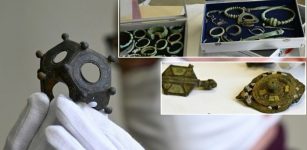 More Than 27,000 Artifacts Illegally Collected By ‘Expert In Archaeology’ – Seized In France
Artifacts | Dec 18, 2020
More Than 27,000 Artifacts Illegally Collected By ‘Expert In Archaeology’ – Seized In France
Artifacts | Dec 18, 2020 -
 Thousands Of Cannonballs Discovered In Southern India
Archaeology | Dec 23, 2015
Thousands Of Cannonballs Discovered In Southern India
Archaeology | Dec 23, 2015 -
 Excavations At Oylum Höyük In Southeast Anatolia Near Syrian Border – Resumed
Archaeology | Jul 26, 2020
Excavations At Oylum Höyük In Southeast Anatolia Near Syrian Border – Resumed
Archaeology | Jul 26, 2020 -
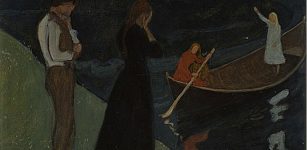 Tuonela – The Land Of The Dead In Beliefs Of Ancient Finnish People
Featured Stories | Nov 9, 2021
Tuonela – The Land Of The Dead In Beliefs Of Ancient Finnish People
Featured Stories | Nov 9, 2021

